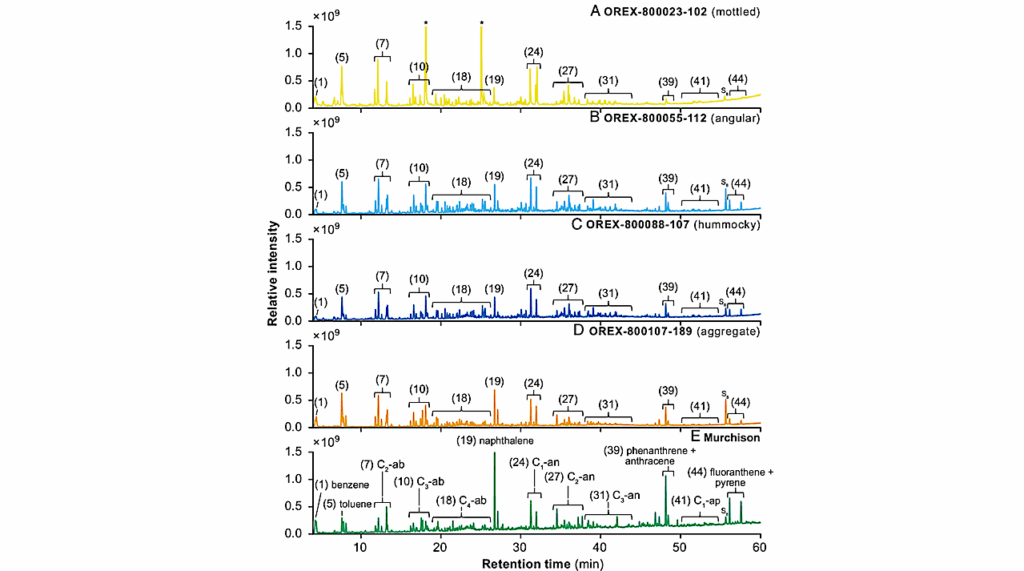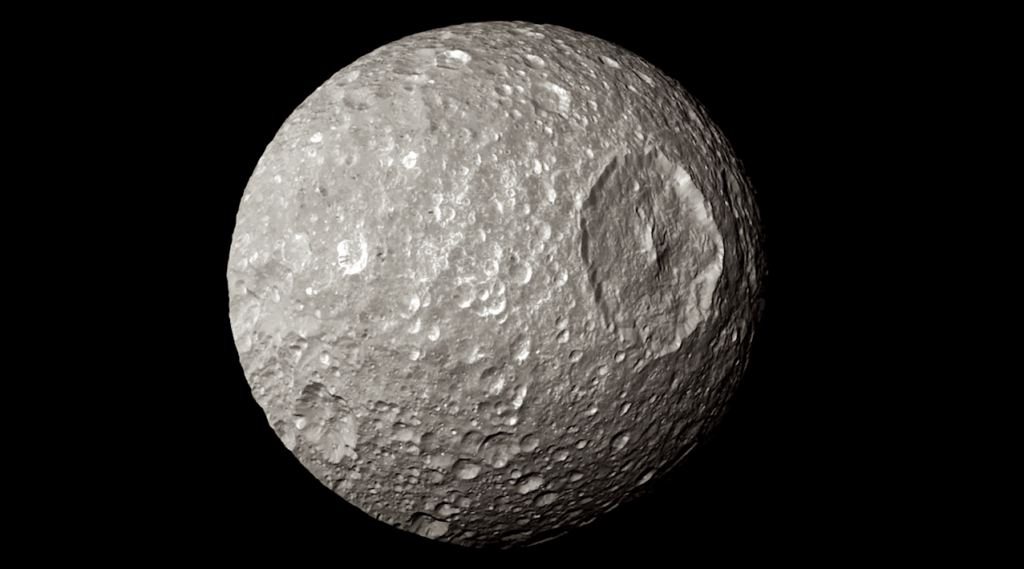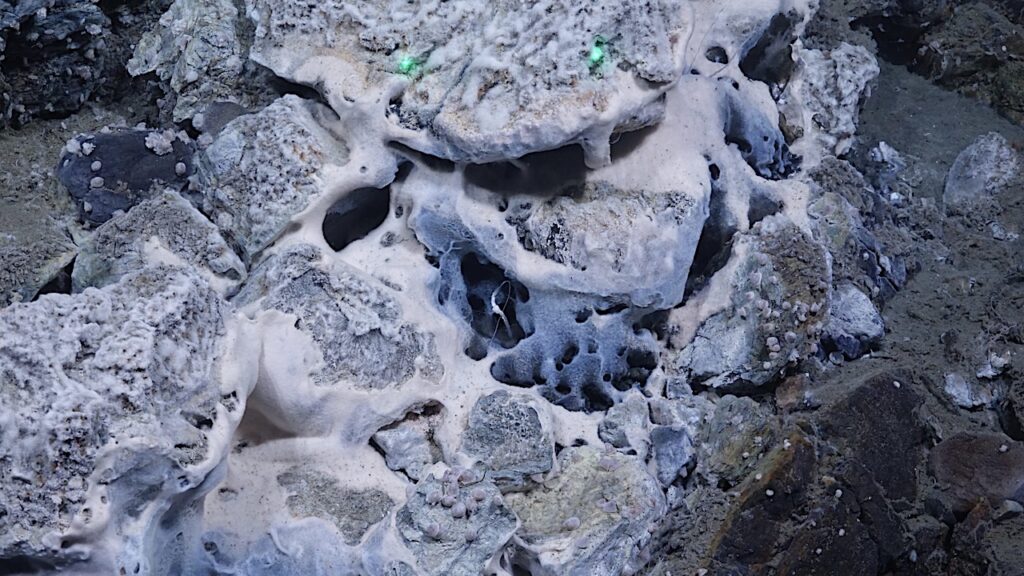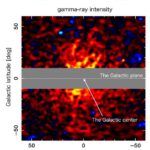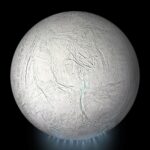Now Reading: Rate Constants and Product Yields for the C + CH3CHO Reaction at Low Temperatures
-
01
Rate Constants and Product Yields for the C + CH3CHO Reaction at Low Temperatures
Rate Constants and Product Yields for the C + CH3CHO Reaction at Low Temperatures
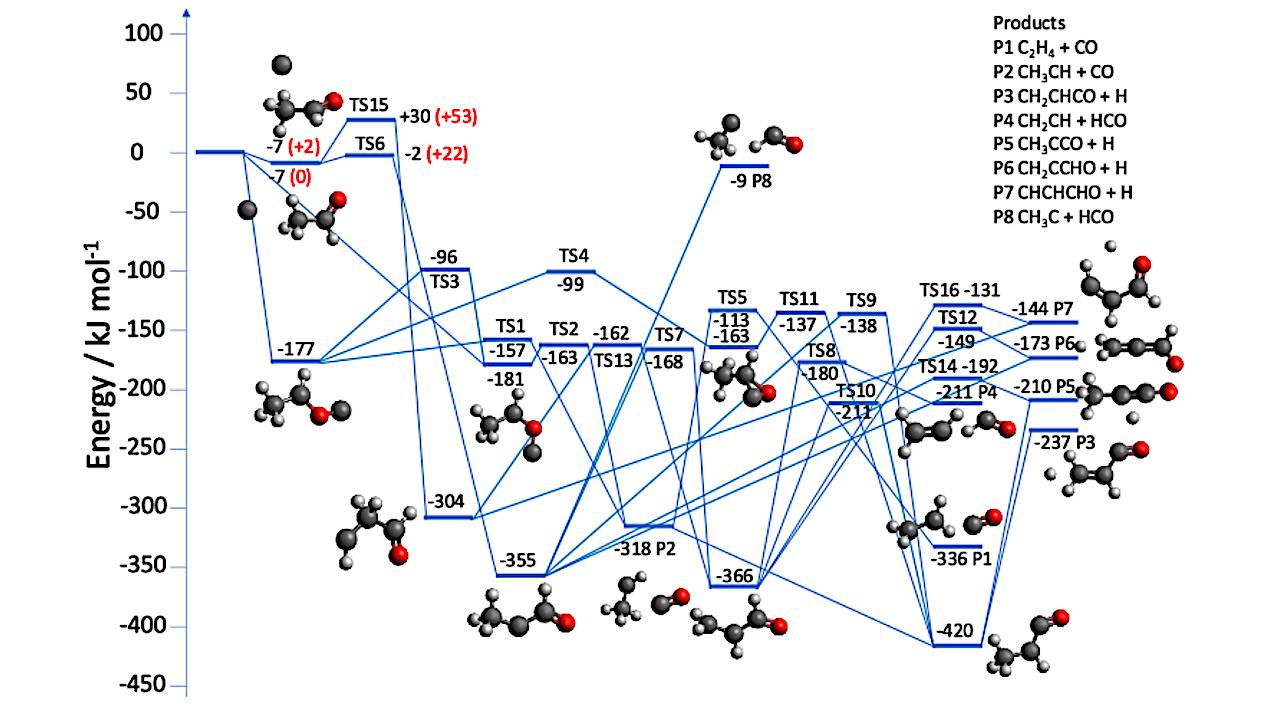

Triplet potential energy surface for the reaction of C with CH3CHO with geometries
and energies calculated at the M06-2X/aug-cc-pVTZ level (energy values in black). Certain
structures close in energy to the reactant asymptote at the M06-2X/aug-cc-pVTZ level were calculated with the more accurate DLPNO-CCSD(T)/ aug-cc-pVTZ method (energy values in
red). All energies were corrected for zero-point energy differences. — astro-ph.GA
Reactions involving atomic carbon in its ground electronic state, C(3P), play an important role in astrochemistry due to high C-atom abundance levels.
Here we performed a kinetic investigation of the reaction between C(3P) and acetaldehyde, CH3CHO, determining rate constants for this process over the 50-296 K range. Measurements of the formation of atomic hydrogen, H(2S), were also performed to provide insight into product formation.
Experiments were conducted using a supersonic flow reactor coupled with pulsed laser photolysis for C-atom generation and pulsed laser induced fluorescence in the vacuum ultraviolet range for the detection of both C(3P) and H(2S) atoms. Quantum chemical calculations of the ground triplet state potential energy surface of C3H4O were also performed to provide theoretical support for the measurements.
The rate constants were large and temperature independent with an average value of 4.0 x 10-10 cm3 s-1. This result is consistent with the theoretical results which predict either very low barriers or none at all on the underlying potential energy surface. Although experimental difficulties prevented the quantitative determination of H-atom formation, qualitatively, H-atom yields were very low with CH3CH/C2H4 + CO as the major products based on the calculations.
The influence of this reaction on interstellar chemistry was tested using a gas-grain model of dense interstellar clouds. These simulations predict that the C(3P) + CH3CHO reaction decreases gas-phase CH3CHO abundances by more than an order of magnitude at early and intermediate cloud ages, with a lower influence at typical dense cloud ages.
Kevin M. Hickson, Jean-Christophe Loison, Valentine Wakelam
Subjects: Astrophysics of Galaxies (astro-ph.GA)
Cite as: arXiv:2506.04794 [astro-ph.GA] (or arXiv:2506.04794v1 [astro-ph.GA] for this version)
https://doi.org/10.48550/arXiv.2506.04794
Focus to learn more
Related DOI:
https://doi.org/10.1021/acsearthspacechem.5c00111
Focus to learn more
Submission history
From: Kevin Hickson
[v1] Thu, 5 Jun 2025 09:22:50 UTC (1,694 KB)
https://arxiv.org/abs/2506.04794
Astrobiology, Astrochemistry,
Stay Informed With the Latest & Most Important News
Previous Post
Next Post
-
 012024 in Review: Highlights from NASA in Silicon Valley
012024 in Review: Highlights from NASA in Silicon Valley -
 02Panasonic Leica Summilux DG 15mm f/1.7 ASPH review
02Panasonic Leica Summilux DG 15mm f/1.7 ASPH review -
 03How New NASA, India Earth Satellite NISAR Will See Earth
03How New NASA, India Earth Satellite NISAR Will See Earth -
 04And Thus Begins A New Year For Life On Earth
04And Thus Begins A New Year For Life On Earth -
 05Astronomy Activation Ambassadors: A New Era
05Astronomy Activation Ambassadors: A New Era -
06SpaceX launch surge helps set new global launch record in 2024
-
 07Space Force plans new ‘Futures Command’ amid pressure to speed up modernization
07Space Force plans new ‘Futures Command’ amid pressure to speed up modernization













